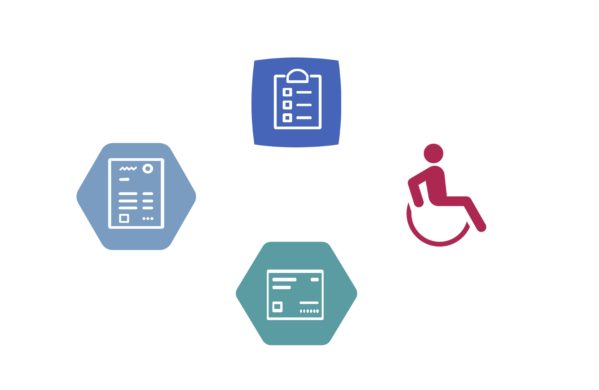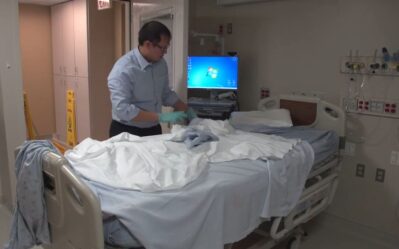Long-Term Care Facility Resources

Welcome to your resource page!
Here you can find resources organized into categories based on the infection control domains Nebraska ICAP uses during facility reviews.
- Resources in each domain are alphabetized.
- There is a glossary of acronyms at the bottom of this page if you are unsure of the source or type of resource.
If you have questions, feel free to reach out to us to be connected with an experienced Long-Term Care Infection Preventionist. You can reach us at (402)552-2881 or nebraskaicap@nebraskamed.com.
Looking for quick COVID-19 Resources?
Summary of Recommendations for COVID-19 in a Long Term Care Facility 5.11.23
Looking for quick Respiratory Illness Resources?
NEW: Tips For School Health Screening: Implementation Tips During Respiratory Disease Outbreaks – tip sheet can be found on the main Nebraska Department of Education Health Services page – under Resources for School Nurses – https://www.education.ne.gov/csss/school-health-education-and-services/#1662487050946-9d9b3e45-f22c
Also, check out or Pathogens of Interest Page! It contains resources for Influenza, RSV and COVID-19.
Long-Term Care COVID-19 Resources
Resources and Tools from Nebraska ICAP for the LTC Setting
Other/ LTC Physical Environment Resources and Tools
- ASHE – COVID-19 Frequently Asked Questions
- ASHE – Temporary Negative Pressurization of Rooms
- ASHRAE – Technical Resources for Healthcare Settings
- CDC – Environmental Guidelines | Guidelines Library | Infection Control
- MN Department of Health – Heating, Ventilator, and Air Conditioning (HVAC) and Fan Considerations for Long-term Care during COVID-19
CDC COVID-19 Resources for Healthcare Settings
COVID-19 Vaccination Resources
General Long-Term Care Resources
Infection Prevention and Control Program and Infrastructure
- CDC – CDC TRAIN – Nursing Home Infection Preventionist Training Course
- CDC – Infection Prevention Tools
- CDC – IPC Risk Assessment
- CDC – Preventing Healthcare-associated Infections
- CMS – SOM – Appendix PP
- CDC – STRIVE Infection Control Training
- NE ICAP – How do I go about reviewing infection control policies and bringing them up to date?
- NE ICAP – Infection Prevention Risk Assessment for High-Risk Tasks
- NE ICAP – Product Evaluation Process
Healthcare Personnel and Resident Safety
- CDC – FAQs for Personnel
- CDC – Infection Control in Healthcare Personnel
- CDC – MMWR Guidelines for Preventing the Transmission of TB in Health-Care Settings
- CDC – Tuberculosis Screening, Testing, and Treatment of U.S. Health Care Personnel: Recommendations from the National Tuberculosis Controllers Association and CDC
- NE ICAP – I have heard that I should have a TB Prevention and Control Plan at my facility. What comprises a TB Prevention and Control Plan?
Surveillance and Disease Reporting
- CDC – Inter-Facility Infection Control Transfer Form
- NE DHHS – Reportable Conditions
- NE DHHS – Title 173 – Chapter-01.pdf
Hand Hygiene
- CDC – Hand Hygiene in Healthcare Settings
- CDC – MMWR Guideline for Hand Hygiene in Health-Care Settings
- NE ICAP – Are there sinks where you should not wash your hands?
- NE ICAP – Are sinks used for equipment decontamination or urine specimen disposal acceptable to wash hands in as well?
- NE ICAP –Hand Hygiene sample policy (Access fillable file by opening in Google Chrome)
- NE ICAP – Is it safe to have alcohol hand sanitizer dispensers around confused adults?
- NE ICAP – Practice Briefs – Myth vs
- Fact regarding use of ABHR (Alcohol Based Hand Rub)NE ICAP – What is a “splash zone” and what is the guidance associated with it?
- NE ICAP – Audit of Hand Hygiene template-6.2.17(audit tool adapted from WHO template)
- SPICE – NC SPICE Hand Hygiene Competency Validation
- WHO – Hand hygiene
- WHO – WHO guidelines on hand hygiene in health care
Personal Protective Equipment (PPE)
- CDC – Consideration for Use of Enhanced Barrier Precautions in Skilled Nursing Facilities HICPAC
- CDC – Demonstration of Donning (Putting On) Personal Protective Equipment
- CDC – Demonstration of Doffing (Taking Off) Personal Protective Equipment
- CDC – PPE Sequence
- NE ICAP – Why is it important to have Personal Protective Equipment (PPE) at or near patient/resident rooms?
- NETEC – COVID-19 PPE Donning and Doffing Sequence
- SPICE – NC SPICE PPE Competency Validation
Respiratory Hygiene and Cough Etiquette
Antimicrobial Stewardship
Injection Safety
- CDC – Injection Safety
- CDC — Injection Safety Checklist
- CDC — Injection Safety – Drug Diversion
- CDC – Injection Safety – One & Only Campaign
- CDC — Workbook for Designing, Implementing, and Evaluating a Sharps Injury Prevention Program
- CDC — FAQs regarding Safe Practices for Medical Injections
- CDC — CDC Train Module: Safe Injection Practices for Healthcare Settings
- CSTE – HAI Drug Diversion Toolkit
- NE ICAP – Policy Template: Safe Injection Policy Template
- NE ICAP — Policy Review Guide
- NE ICAP – Practice Brief: What is a “splash zone” and what is the guidance associated with it?
- NE ICAP – Practice Brief: What type of thermometer should I use when monitoring our facility medication refrigerator temperatures? What do I document, and how often?
- NE ICAP — In the Zone – The Splash Zone
Point of Care Testing
- CDC – CDC Clinical Reminder: Insulin Pens Must Never Be Used for More than One Person
- CDC – Frequently Asked Questions (FAQs) regarding Assisted Blood Glucose Monitoring and Insulin Administration
- CDC – Infection Prevention during Blood Glucose Monitoring and Insulin Administration
- NE ICAP – Blood Glucose Monitoring Audit Tool revised
- NE ICAP – Should I verify the competency of the healthcare workers who are performing assisted blood glucose monitoring?
- NE ICAP – What factors should be considered when developing a protocol or policy for cleaning and disinfection of blood glucose meters used on multiple patients?
- NE ICAP – Protocol Template: Glucometer Cleaning Protocol Template
Catheter-associated Urinary Tract Infection (CAUTI)
- CDC – Guideline for Prevention of Catheter-Associated Urinary Tract Infections
- CDC – TAP Catheter-Associated Urinary Tract Infection (CAUTI) Implementation Guide: Links to Example Resources
- NE ASAP – Revised McGeer criteria for infection surveillance checklist
- NE ASAP – SBAR Tool for Suspected Urinary Tract Infection (UTI)–refer to the companion documents on how to use and implement SBAR tools
- NE ICAP – Washing UC leg bags
Central Line-associated Bloodstream Infection (CLABSI)
Clostridiodes difficile Infection (CDI)
Environmental Cleaning and Disinfection
- APIC – Strategies to Mitigate Cross Contamination of Non-critical Medical Devices
- CDC – Infection Control – Environmental Infection Control Guidelines (Home Page)
- CDC – PDF: Guidelines for Environmental Infection Control in Health-Care Facilities
- Air
- Water
- Environmental Services
- Environmental Sampling
- Laundry and Bedding
- Animals in Healthcare Facilities
- Regulated Medical Waste
- CDC – Best Practices for Cleaning and Disinfection in Healthcare Facilities
- CDC – Options for Evaluating Environmental Cleaning
- EPA – Medical Waste Frequent Questions
- Minnesota Hospital Association – Environmental Services Cleaning Guidebook
- EPA – Where You Live — State Medical Waste Programs and Regulations
- NE ICAP – Environmental Cleaning in Healthcare Training Video Series
- NE ICAP – Form: Annual Blacklight Tracking Workbook
- NE ICAP – Form: EVS Audit Tracking Form
- NE ICAP – Form: Public Area EVS Audit Tracking Form
- NE ICAP – Form: Patient Room EVS Audit Tracking Form
- NE ICAP – Form: Spa/ Shower EVS Audit Tracking Form
- NE ICAP – Policy Template: Undersink Storage Sample Policy
- NE ICAP – Practice Brief: I have been cited for having linen stored inappropriately. What is the recommendation for storing linen?
- NE ICAP – Practice Brief: Is it sufficient to clean shared nail clippers with alcohol?
- NE ICAP – Practice Brief: Should gait belts be assigned per aide/therapist, and used on several residents, or should they be dedicated to one resident, and only used for that resident?
- NE ICAP – Practice Brief: What factors should be considered when developing a protocol or policy for cleaning and disinfection of blood glucose meters used on multiple patients?
- NE ICAP – Practice Brief: What should NOT be stored under sinks?
- NE ICAP – Practice Brief: Where can I find a list of the cleaning/disinfecting products effective for killing bacteria and viruses?
- WHO – How to Dilute and Use Bleach
-
Environmental Cleaning (All)
Environmental Cleaning in Healthcare Part 3: Clean Patient/ Resident Room (Occupied)
-
Environmental Cleaning (All)
Environmental Cleaning in Healthcare Part 4: Clean Patient/ Resident Room (Discharged)
-
Environmental Cleaning (All)
Environmental Cleaning in Healthcare Part 5: Clean Patient/ Resident Room (Isolation)
-
Environmental Cleaning (All)
Environmental Cleaning in Healthcare Part 6: Clean Patient/ Resident Restroom
Device Reprocessing
- CDC – Guideline for Disinfection and Sterilization in Healthcare Facilities
- NE ICAP Practice Brief – Practice Briefs sterile supply storage requirements
Infection Control Risk Assessment (ICRA) for Construction
- ASHE – Using the Health Care Physical Environment to Prevent and Control Infection
- ASHE – Complimentary Tool – Infection Control Risk Assessment 2.0 (ICRA 2.0)
General Vaccine and Immunization Resources
- ACIP – ACIP Recommendations
- CDC – Epidemiology and Prevention of Vaccine-Preventable Diseases – The Pink Book
- CDC – Guidelines for Preventing the Transmission of Mycobacterium Tuberculosis in Health-Care Settings
- CDC – Vaccine & Immunizations
- IAC – Immunization Action Coalition Home Page
- NE ICAP – Practice Brief: Can I store vaccines in the door of our medication refrigerator?
Water Management
Resource Glossary:
- AAMI: Association for the Advancement of Medical Instrumentation
- APIC: Association for Professionals in Infection Control and Epidemiology
- ASHRAE: American Society of Heating Refrigerating and Air-Conditioning Engineers
- CAUTI: Catheter Associated Urinary Tract Infection
- CDC: Centers for Disease Control and Prevention
- CDI: Clostridiodes dificille Infection
- CMS: Centers for Medicare and Medicaid Services
- EPA: Environmental Protection Agency
- FDA: Food and Drug Administration
- HAI: Hospital Acquired Infection
- HAN: Health Alert Network
- HICPAC: Healthcare Infection Control Practices Advisory Committee
- IAC: Immunization Action Coalition
- MDRO: Multi Drug Resistant Organism
- Ne ASAP: Nebraska Antimicrobial Stewardship Assessment and Promotion Program
- Ne DHHS: Nebraska Department of Health and Human Services
- Ne ICAP: Nebraska Infection Control Assessment and Promotion Program
- NETEC: National Emerging Special Pathogens Training and Education Center
- NIOSH: National Institute of Occupational Safety and Health
- OSHA: Occupational Safety and Health Administration
- PPE: Personal Protective Equipment
- SHEA: Society for Healthcare Epidemiology of America
- TJC: The Joint Commission
- WHO: World Health Organization












